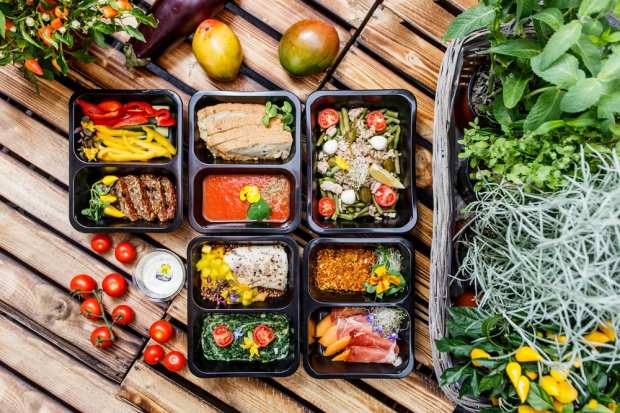Munchery’s Out, So Who’s In To Travel Food Delivery’s Last Mile?

Another one has bitten the dust when it comes to providing the vital last-mile delivery service for online consumers (especially the hungry ones). The news that on-demand delivery startup Munchery has closed its doors — even after raising $125 million in venture capital funding — serves as reminder of how difficult it can be to gain a profitable foothold (much less a dominant position) in the on-demand food delivery space.
Munchery came on the scene in 2010, and hit a valuation of $300 million in 2015. It tried several iterations to grow the business, but none of them took off. Munchery even offered monthly membership plans for its prepared, healthy meals, tying itself to the subscription eCommerce trend.
It’s becoming clearer that, in the food delivery space (crowded with numerous players striving to serve often impatient, but digitally savvy consumers), that scale is growing more important (even as smaller entrants keep working toward a foothold in that world).
Power Of Scale
Other recent news supports that point.
Uber Eats has continued to add more consumer options to its expanding portfolio, this time with Starbucks. The coffee chain said this week (Jan. 22) that it will add more cities to its delivery network via a partnership with Uber Eats. This news — part of an ongoing deal between the two companies — combines two well-known brands with a delivery service that has a fleet of couriers who are pretty much ready at all times. This deal also underscores the last-mile logistics expertise, which is a core competency of Uber: a hyperlocal density of drivers who can pick up and deliver quickly.
Middle East-based ride-hailing company Careem is following in its footsteps, and expanding its business into a delivery service, according to reports. Careem will now provide food delivery services in Dubai and Jeddah, but the company sees the service eventually expanding to include pharmaceuticals. Careem plans to invest a sizable amount of money into the new service — to the tune of $150 million.
The benefits of scale work for some Uber Eats rivals, too. For instance, one recent analysis advised, “If you already have a delivery method, Grubhub could be the way to go. You’ll benefit from the sheer number of eyes on the app that can find your restaurant.” That’s why the big players keep drawing in more restaurants, of course.
Consumer Demands
Delivery customers are also turning to newer retail technology to interact with these services — which means time and convenience become more important for those services if they want to survive, as there is little room for error, given the speed of digital ordering and the amount of competition out there.
Take the rise of voice-activated retail tasks, as demonstrated in the recent PYMNTS “How Will We Pay 2018 Edition.” According to that report, “Of the consumers we studied, 28 percent of respondents who owned voice-activated speakers used them to make a purchase in the past seven days. A common use case includes buying food — both grocery purchases and food ordered for delivery at home.”
Further proof of the premium that consumers place on time and convenience comes from a recent analysis from Cowen. The report found that, should delivery from a restaurant not be available, 36 percent of consumers would order delivery from another source. That compares with 30 percent who would cook their own meals at home, 23 percent who would do pickup from their first-choice restaurants and 7 percent who would buy prepared food from a grocery store.
For Munchery’s part, it tried — and obviously failed — to do something that, in military terms, amounts to shortening one’s lines to conserve resources, and focus on core areas and capabilities. Before calling a quits, Munchery shut down its services in Seattle, Los Angeles and New York so the company could focus on its largest market (San Francisco) in an effort to become profitable.
Future Moves
So, what’s next in these delivery wars?
For starters, restaurants are starting to understand that delivery might not bring in the incremental sales and new customers that were once assumed, according to numerous observers in the space. That said, it seems likely that the anticipated “shakeout of delivery services” will happen in the near term, according to a report from Food on Demand.
“It might be a while, as category leader Grubhub and others continue growing in the current, hot category of restaurant delivery,” the report said.
Smaller entrants, too, are trying to gain their foothold in this space, even as scale becomes a bigger force for on-demand food delivery.
That includes such players as Robomart, which offers what amounts to self-driving grocery stores. The vehicles are operated by “drivers” in another location, and, according to an account, “can reach 25 mph [and] will be dispatched to a particular neighborhood, where customers can summon one through an app.”
Consumers go to the vehicle (it pretty much looks like a small, sleek van), open the sliding doors and pick out food, which includes both fresh options and hot meals. The vehicle’s automatic tracking technology keeps track of purchases, and charges customers’ accounts — a process that fits into the larger trend of cashierless stores, including supermarkets.
Those smaller entrants would seem to have at least some space and time to find their footing in the food delivery world. However, as the Munchery failure signaled, without scale, the odds of success are getting longer.